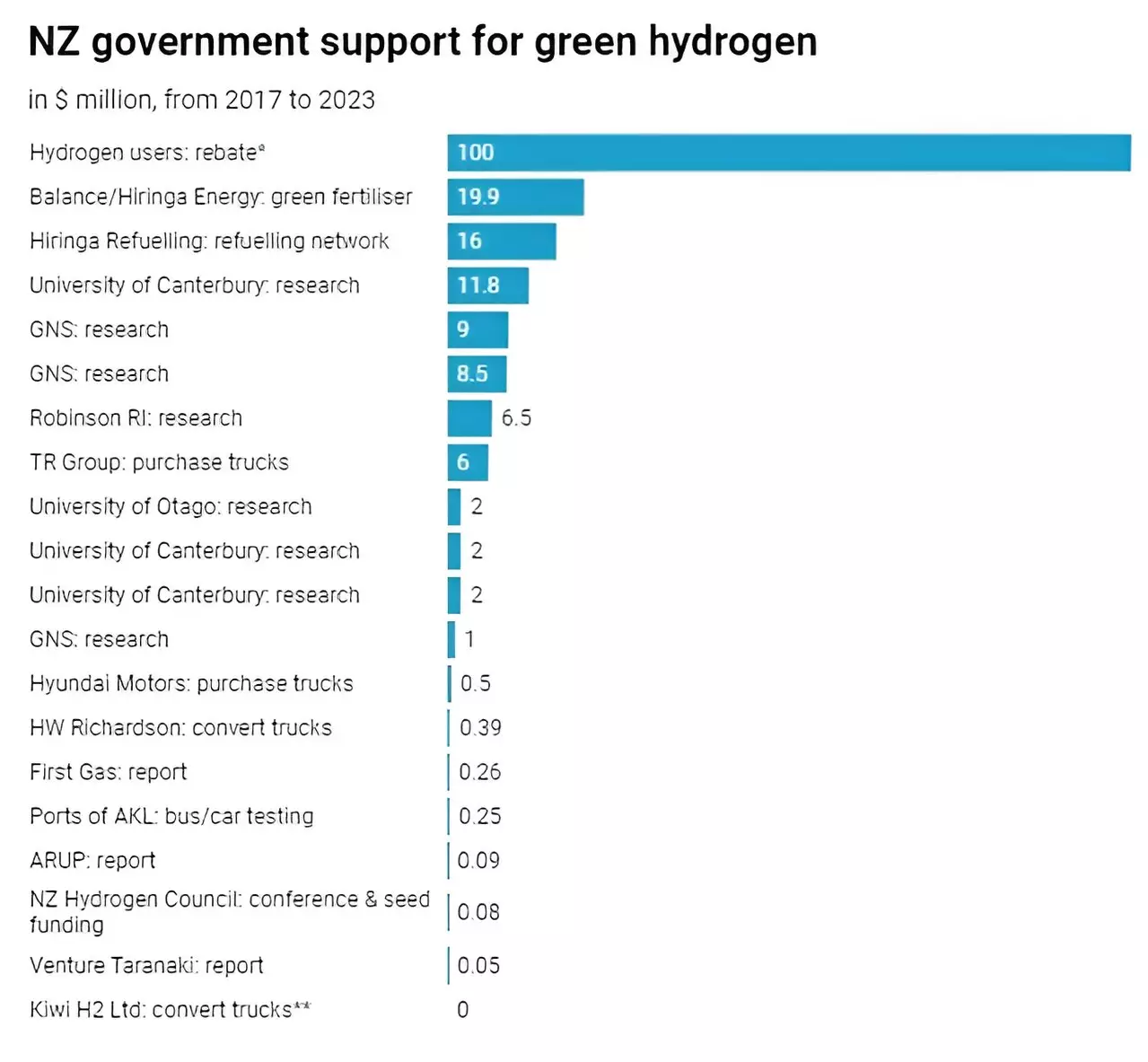New Zealand’s ambitious plans for introducing hydrogen-powered trucks suffered a major setback with the recent failure of a deal involving Hyzon, a US company specializing in hydrogen fuel-cell trucks. The removal of a significant government rebate scheme further complicates the transition to green hydrogen, casting doubts on the feasibility of the much-touted energy technology. Despite the growing interest in hydrogen as a clean energy alternative for transport and energy systems worldwide, critical voices within New Zealand have been largely absent from the narrative.
Over the years, the New Zealand government has allocated substantial funding amounting to $186.3 million towards green hydrogen initiatives from 2017 to 2023. This support has been directed towards the development of a hydrogen refueling network, vehicle conversions, research, and the establishment of the New Zealand Hydrogen Council. Proponents of green hydrogen argue that it is crucial for sectors that are challenging to decarbonize through direct electrification, such as heavy road transport, shipping, and fertilizer production. However, there is a lack of consensus on the optimal sectors to focus on and whether hydrogen is indeed the best choice.
Government reports and media coverage have generally portrayed green hydrogen in a positive light, emphasizing the opportunities and benefits of transitioning to hydrogen-based energy systems. However, a critical analysis reveals a lack of in-depth scrutiny and examination of the potential weaknesses and threats associated with green hydrogen. Despite some experts raising concerns about the efficiency and cost-effectiveness of hydrogen compared to alternative solutions like battery electric vehicles, these critical perspectives have not received adequate attention in New Zealand’s hydrogen debate.
In light of emerging evidence suggesting the practical challenges and limitations of green hydrogen, it is essential to adopt a more nuanced perspective towards its implementation. Recognizing that hydrogen is primarily an energy carrier and not a standalone energy resource, we need to reevaluate our approach to ensure that our energy transition strategies are well-informed and sustainable. This requires incorporating independent advice and critical analysis, free from commercial interests, to guide government policy decisions on green hydrogen initiatives.
Moving forward, New Zealand must prioritize applications of green hydrogen that offer the best potential for decarbonization and sustainability outcomes. This could involve transitioning key industries from fossil fuels to hydrogen to produce green steel, green ammonia, fertilizer, and green methanol. By aligning our limited resources with applications that have the greatest likelihood of achieving New Zealand’s decarbonization goals, we can ensure a more effective and impactful transition to green hydrogen in the country.
The reality of green hydrogen in New Zealand is far more complex and uncertain than the optimistic narratives and rhetoric that have dominated the discussion thus far. By critically evaluating the potential challenges and drawbacks of green hydrogen, we can make more informed choices and steer our energy transition towards a truly sustainable and decarbonized future.


Leave a Reply